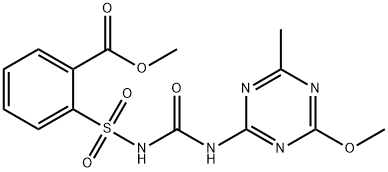Sarpogrelate hydrochloride
Synonym(s):Anplag;Butanedioic acid 1-[2-(dimethylamino)-1-[[2-[2-(3-methoxyphenyl)ethyl]phenoxy]methyl]ethyl] ester hydrochloride;MCI 9042;Succinic acid mono-(1-dimethylaminomethyl-2-(2-[2-(3-methoxyphenyl)et hyl]phenoxy)ethyl) ester hydrochloride
- CAS NO.:135159-51-2
- Empirical Formula: C24H32ClNO6
- Molecular Weight: 465.96698
- MDL number: MFCD00887582
- EINECS: 663-199-9
- SAFETY DATA SHEET (SDS)
- Update Date: 2024-11-17 16:00:36

What is Sarpogrelate hydrochloride?
Description
Sarpogrelate hydrochloride, a potent and selective serotonin 5-HT2 receptor antagonist, was launched in Japan as an antithrombotic. It exhibits inhibition of ex vivo platelet aggregation stimulated by serotonin in combination with collagen and suppression of blood vessel constriction mediated by 5-HT2 in vitro. Its antithrombotic effects have been demonstrated in several in vivo experimental models including reduction of the mortality rate in acute pulmonary thromboembolic disease, arterial thrombosis, and peripheral obstructive disease. Sarpogrelate has been shown to be especially useful as an antiplatelet agent for patients with Type 2 diabetes mellitus, in whom 5-HT2mediated amplification of collageninduced platelet aggregation is significantly increased.
Description
Sarpogrelate is a selective antagonist of the serotonin (5-HT) receptor subtypes 5-HT2A, 5-HT2B, and 5-HT2C (Kis = 3.02, 269, and 37.2 nM, respectively, for human recombinant receptors expressed in CHO-K1 cells). It is selective for 5-HT2 (Ki = 70.8 nM) over 5-HT1 (Ki = >26,000 nM), α1-, α2-, and β-adrenergic (Kis = 640-123,800 nM), and muscarinic receptors (Ki = >40,000 nM). In vitro, it inhibits aggregation of rat whole blood induced by collagen, 5-HT with collagen, and 5-HT with ADP (; IC50s = 57.7, 0.56, and 22.7 μM, respectively). In vivo, it inhibits leukocyte-endothelial interactions in the femoral artery induced by a high-fat high-fructose diet (HFFD) in mice when administered at a dose of 5 mg/kg per day. Sarpogrelate (5 mg/kg per day) decreases ventricular hypertrophy and infarct size in a rat model of myocardial infarction.
Chemical properties
White Solid
Originator
Mitsubishi Kasei (Japan )
The Uses of Sarpogrelate hydrochloride
Sarpogrelate hydrochloride is a potent and selective 5-HT2A receptor antagonist ress-induced hemolysis.
What are the applications of Application
Sarpogrelate hydrochloride is aselective SR-2A antagonist
Definition
ChEBI: Sarpogrelate hydrochloride is a stilbenoid.
brand name
Anplag
Biological Activity
Selective 5-HT 2A receptor antagonist (pK i values are 8.52, 7.43 and 6.57 for 5-HT 2A , 5-HT 2C and 5-HT 2B receptors respectively). Displays selectivity over 5-HT 1 , 5-HT 3 , 5-HT 4 H 1 , H 2 , M 3 , α 1 -adrenergic, α 2 -adrenergic and β -adrenergic receptors. Displays cardioprotective activity in vivo .
in vitro
the major metabolite (r,s)-m-1, and m-1 enantiomers of sarpogrelate specifically blocked 5-ht at 5-ht2a receptors. the stereochemical configuration of the ligands does not obviously play a key role at binding to the 5-ht2a receptor [2].
in vivo
pad patients were divided into two groups. one group treated with 100 mg sarpogrelate in oral 3 times one day for 12 weeks (n = 10), while the other group who remained on conventional therapy as control group (n = 11). forearm blood flow (fbf) and leg blood flow (lbf) responses to reactive hyperemia (rh) and sublingual administration of nitroglycerin (ntg) were measured by strain-gauge plethysmography. after twelve weeks of its administration, fbf and lbf responses during rh exhibited significant increases from 13.2 6 1.7 to 18.1 6 2.2 ml/min every 100 ml tissue (p , 0.01) and from 8.2 6 0.9 to 14.2 6 2.1 ml/min every 100 ml tissue (p , 0.05), respectively. augmentation of fbf and lbf induced by sarpogrelate responses to rh was maintained at 24 weeks. the control group had no change observed in at each follow-up time point. the changes in fbf and lbf after sublingual ntg were similar during follow-up periods in the two groups. these findings suggest that longterm oral administration of sarpogrelate improves vascular function in patients with pad [3].
storage
Desiccate at RT
References
[1] nishio h1, inoue a, nakata y. binding affinity of sarpogrelate, a new antiplatelet agent, and its metabolite for serotonin receptor subtypes. arch int pharmacodyn ther. 1996 mar-apr;331(2):189-202.
[2] pertz h1, elz s. in-vitro pharmacology of sarpogrelate and the enantiomers of its major metabolite: 5-ht2a receptor specificity, stereoselectivity and modulation of ritanserin-induced depression of 5-ht contractions in rat tail artery. j pharm pharmacol. 1995 apr;47(4):310-6.
[3] miyazaki m1, higashi y, goto c, chayama k, yoshizumi m, sanada h, orihashi k, sueda t. sarpogrelate hydrochloride, a selective 5-ht2a antagonist, improves vascular function in patients with peripheral arterial disease. j cardiovasc pharmacol. 2007 apr;49(4):221-7.
Properties of Sarpogrelate hydrochloride
| Melting point: | 145-148°C |
| storage temp. | Inert atmosphere,2-8°C |
| solubility | deionized water: ≥5mg/mL |
| form | solid |
| color | White to off-white |
| CAS DataBase Reference | 135159-51-2(CAS DataBase Reference) |
Safety information for Sarpogrelate hydrochloride
| Signal word | Warning |
| Pictogram(s) |
 Exclamation Mark Irritant GHS07  Environment GHS09 |
| GHS Hazard Statements |
H302:Acute toxicity,oral H400:Hazardous to the aquatic environment, acute hazard |
| Precautionary Statement Codes |
P273:Avoid release to the environment. |
Computed Descriptors for Sarpogrelate hydrochloride
| InChIKey | POQBIDFFYCYHOB-UHFFFAOYSA-N |
Sarpogrelate hydrochloride manufacturer
New Products
(S)-3-Aminobutanenitrile hydrochloride 4-Methylphenylacetic acid N-Boc-D-alaninol N-BOC-D/L-ALANINOL Tert-butyl bis(2-chloroethyl)carbamate 3-Morpholino-1-(4-nitrophenyl)-5,6-dihydropyridin- 2(1H)-one Furan-2,5-Dicarboxylic Acid Tropic acid 1-Bromo-3,5-Di-Tert-Butylbenzene S-2-CHLORO PROPIONIC ACID ETHYL ISOCYANOACETATE 2-Bromo-1,3-Bis(Dimethylamino)Trimethinium Hexafluorophosphate 4-IODO BENZOIC ACID 3-NITRO-2-METHYL ANILINE 1-(2,4-DICHLOROPHENYL) ETHANAMINE (2-Hydroxyphenyl)acetonitrile 4-Bromopyrazole 2-(Cyanocyclohexyl)acetic acid 4-methoxy-3,5-dinitropyridine 1-(4-(aminomethyl)benzyl)urea hydrochloride 2-aminopropyl benzoate hydrochloride diethyl 2-(2-((tertbutoxycarbonyl)amino) ethyl)malonate tert-butyl 4- (ureidomethyl)benzylcarbamate Ethyl-2-chloro((4-methoxyphenyl)hydrazono)acetateRelated products of tetrahydrofuran
![1-(Dimethylamino)-3-[2-[2-(3-methoxyphenyl)ethyl]phenoxy]-2-propanol hydrochloride](https://img.chemicalbook.in/CAS/GIF/135261-74-4.gif)







You may like
-
 135159-51-2 Sarpogrelate hydrochloride 98%View Details
135159-51-2 Sarpogrelate hydrochloride 98%View Details
135159-51-2 -
 135159-51-2 98%View Details
135159-51-2 98%View Details
135159-51-2 -
 Sarpogrelate HCl 99% (HPLC) CAS 135159-51-2View Details
Sarpogrelate HCl 99% (HPLC) CAS 135159-51-2View Details
135159-51-2 -
 Sarpogrelate hydrochloride CAS 135159-51-2View Details
Sarpogrelate hydrochloride CAS 135159-51-2View Details
135159-51-2 -
 1975-50-4 98%View Details
1975-50-4 98%View Details
1975-50-4 -
 2-HYDROXY BENZYL ALCOHOL 98%View Details
2-HYDROXY BENZYL ALCOHOL 98%View Details
90-01-7 -
 14714-50-2 (2-Hydroxyphenyl)acetonitrile 98+View Details
14714-50-2 (2-Hydroxyphenyl)acetonitrile 98+View Details
14714-50-2 -
 118753-70-1 98+View Details
118753-70-1 98+View Details
118753-70-1